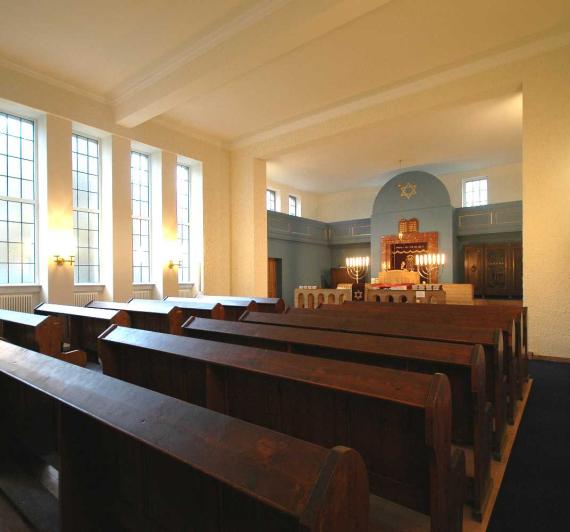Max-Cars-Platz 1
99084 Erfurt
Germany
Since the Jewish community of Erfurt grew again after the end of World War 2, the community board already in 1946 made a first request to the city of Erfurt for the return of the property on which the Great Synagogue had stood until 1938. After a council decision on March 20, 1947, the community received the site back. Since then, they worked on plans to build a new synagogue.
The first draft of the architect Willy Nöckel from 1948 was rejected in 1950 on the grounds that the building with a round prayer room did not fit into the urban planning conditions, it was "too big", too sacral". Only a third design by the architect in 1951, which took these reservations into account, was approved by the city. The less tall and very plain building was inaugurated on Aug. 31, 1952.
The Erfurt synagogue remained the only purely new synagogue building after World War II on the territory of the GDR. In the course of the dynamic political changes at the beginning of the 90s of the 20th century, many people of Jewish faith left the disintegrating Soviet Union. Since 1991, they and people with Jewish ancestors from the successor states of the Soviet Union had the opportunity to enter Germany as contingent refugees; several hundred found a new home in Erfurt.
The New Synagogue thus once again forms the center of a lively community. Among other things, the weekly Shabbat services are celebrated here, which are also open to non-Jewish visitors.

